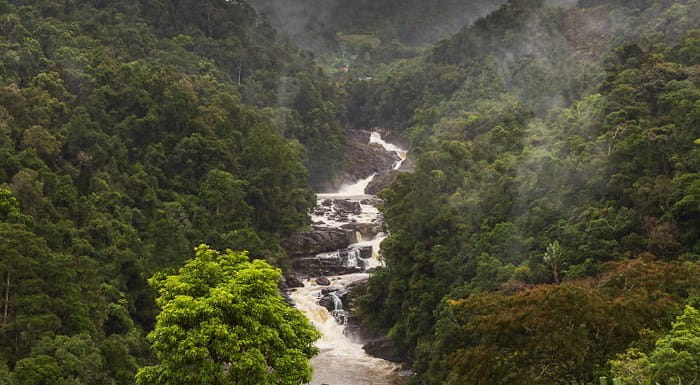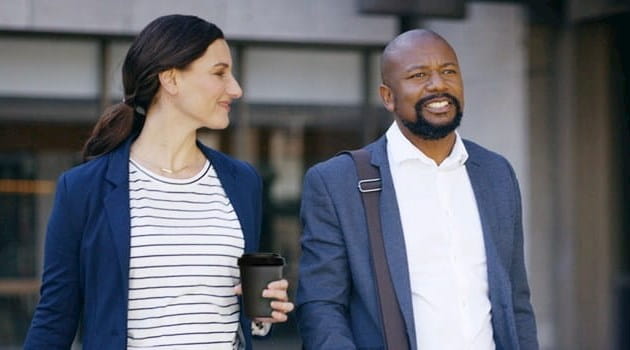Natalie Ambrosio Preudhomme joined Moody’s through its acquisition of a climate-focused business called Four Twenty Seven, a physical climate risk analytics firm. She now sits as a Director within the outreach and research team at Moody’s ESG Solutions, a new business unit created a year ago by the company.
It focuses on providing climate, ESG and sustainable finance data and analytics to the market. Climate is one of the five main pillars of this part of the business, and Ambrosio Preudhomme leads the climate thought leadership functions there.
Here to act
Moody’s, like many in the corporate world, is moving quickly on climate change. “The past is no longer an accurate representation of what the future may hold. The severity and intensity of floods, wildfires and new heat records are surpassed seemingly every year,” she says. “This is the new reality that we are living in and there is a need to factor that into decisions.”
Decisions must factor in not only physical climate risks, but also risks stemming from the transition to a net zero economy – something that hadn’t felt so near-term for companies before, says Ambrosio Preudhomme. There is a need for all businesses to recognise how this transition affects them when making commitments and transitioning towards net zero.
“The first step to understanding risk is to take a forward-looking approach. Working backwards on what occurred five years ago isn’t going to give you a trustworthy analysis of where you stand today on the risk climate change presents,” she says.
To conduct science-driven risk analysis, and asset level climate risk assessments, market practitioners need consistent and comparable firm-level information. There are a lot of ways for individual companies to gather and collect data, from companies like Moody’s or through their own data gathering.
“Institutions need to build capacity in their firms. They may not necessarily need climate scientists, but employees who understand climate risk and can integrate data into processes.”
Tackling risk assessments
Risk assessment and risk disclosure are the first steps. The next steps are not just treating it as a tick-box exercise, but to actually use data effectively to manage your risk exposure, she adds.
“It’s about looking across systems to build opportunities to help risk assessment and build resilience, and these can come across all sectors of a business, assisted by technology and services.
“Businesses seeking data can help, but shareholder pressure can really work too. This can come with positive reinforcement and engaging firms to prepare for transition.”
Shareholder pressure is important and they tend to reward firms that lead from the front. Conditioned risk, low carbon tech and having data on which companies are aligned with a low carbon future, or whether firms are investing in transition, are important too. However, a lack of data should not be an excuse for inaction, says Ambrosio Preudhomme. “Perfect is the enemy of good in this situation, and companies must appreciate the gravity of the risk and act.
“Developing data can help, but there really is meaningful information out there for physical risk, with good granular data and satellite imagery as examples of existing and rapidly developing actionable intelligence.”
Calculating the costs
Understanding of what the financial implications actually mean in the case of climate-implicated risks of business defaults for credit and lending have rapidly evolved. Physical, climate and transition risks are now embedded into risk models and macro-economic models.
Moody’s ESG Solutions has just released a report on TCFD disclosure, and found an increase year on year of compliance with TCFD amongst the nearly 4000 surveyed firms, so the momentum is positive.
Bank stress testing for climate change, and the ECB stress tests, all encompass climate change now.
Ambrosio Preudhomme is positive, but says there is still a lot of work to be done on the transition to net zero; what do commitments mean, how do they align with what climate science is saying, and in what timeframe.
“Quantifying the need for adaptation and technologies that support the transition to Net Zero is essential for highlighting the investment opportunity. Assessing company resilience is a lot harder and is context-specific, but is an area we’re working on.
“Moody’s as a global risk assessment business is in a position to help, with the launch of our Moody’s on Climate campaign, giving the market and visitors a space to find our most recent research analytics and expert blogs.”
COP26: acting together
Find inspiration, information and practical resources to support the goals of the UN Climate Change Conference in Glasgow and explore why it represents a critical time for the profession.



